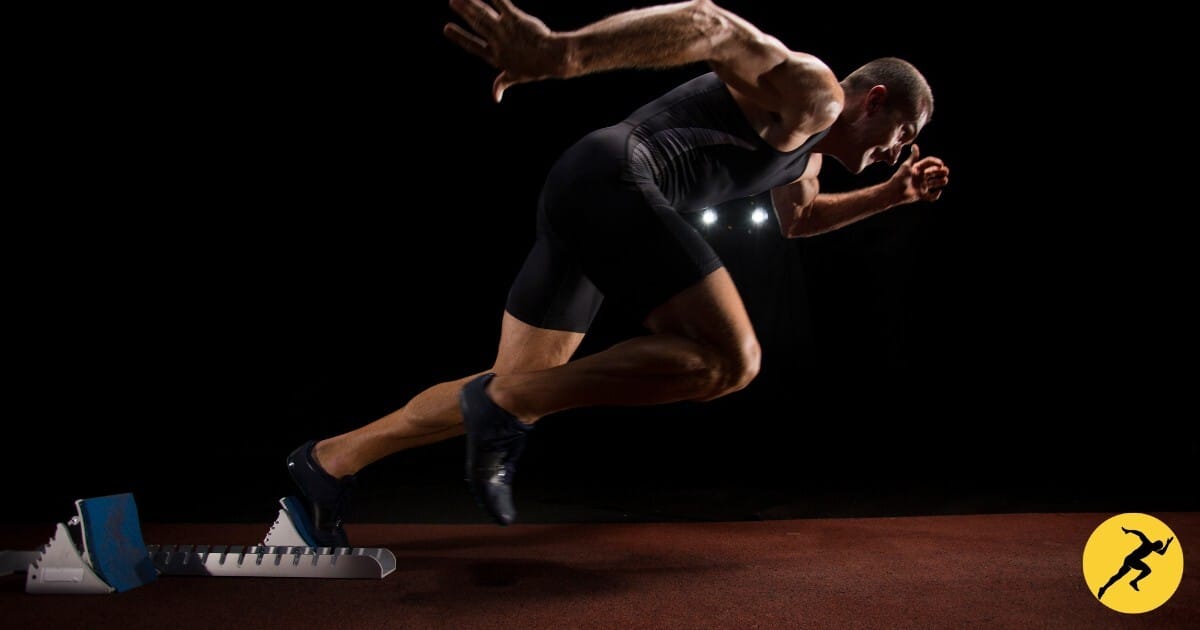Are you wasting time on low heel recovery?
Why forcing this pattern slows athletes down
DEEP DIVE
Are You Wasting Time on Low Heel Recovery?

You've probably heard the cue a thousand times. Keep your heel low during those first steps out of the blocks. Quick foot turnover. Stay compact through recovery.
It's become gospel in sprint coaching circles.
But what if chasing low heel recovery is actually making some athletes slower?
The research on this is more complicated than most coaches want to admit. Yes, low heel recovery can be beneficial during acceleration. It shortens the lever arm, allows for higher step frequency, helps maintain forward lean.
Noah Lyles does it brilliantly. His first few steps are textbook efficient, heel staying close to the ground as he cycles through.
But here's what doesn't get talked about enough: not every athlete benefits from emphasizing this pattern. Some actually get worse when you force it.
The problem starts with treating low heel recovery like a universal technical standard. Coaches see elite sprinters doing it, so they drill it into every athlete they work with. Low heel drills, cycling exercises, constant cueing to keep that foot down.
What they're missing is that physical differences matter more than people think.
Hip mobility varies. Limb lengths are different. Strength profiles aren't the same across athletes. Some sprinters produce more powerful acceleration with slightly higher heel recovery because that's what their body structure allows them to coordinate effectively.
When you force a uniform pattern on everyone, you disrupt natural neuromuscular coordination. The athlete starts thinking too much about heel height instead of just running fast. Their hip flexors work harder to whip the leg through an artificially shortened path, which can actually slow turnover instead of speeding it up.
I've seen athletes develop hamstring issues trying to maintain forced low heel recovery. The pattern didn't match their strength or mobility, and eventually something gave out.
There's also the timing question that most programs ignore.
Low heel recovery matters most in the first 10-20 meters. After that, your torso naturally rises, stride mechanics change, and heel recovery should get progressively higher as you transition toward maximum velocity.
Trying to maintain artificially low heels past that acceleration phase is counterproductive. You need fuller leg cycling to hit top speed.
But athletes get so locked into the "low heel good, high heel bad" mindset that they can't make that natural transition. They're still trying to keep their foot down at 30 meters when they should be opening up their stride.
So what actually works?
First, stop obsessing over heel height as the primary metric. What matters more is shin angle at ground contact and horizontal force direction. You can have relatively low heel recovery and still brake if your shin angle is wrong.
Coaches like Charlie Francis and John Shepherd have emphasized this for years. Focus on powerful ground contact, proper force vectors, and avoiding excessive work behind the body. Heel height becomes a secondary consideration.
Second, respect individual patterns. If an athlete naturally runs with slightly higher heel recovery and produces good acceleration times, there's no reason to change it. Some of the fastest starters in history haven't had textbook low heel recovery.
Usain Bolt didn't. He had more variation in his pattern, and it clearly didn't hurt his career.
Third, if you are going to work on lowering heel recovery, do it through the right progression. Dorsiflexion drills that teach the foot to stay active. A-skips with proper hip drive. Single-leg cycling exercises that build coordination without forcing artificial positions.
Hill sprints and resisted accelerations naturally promote lower heel patterns without athletes having to think about it. The load does the coaching for you.
But most importantly, tie it back to actual performance. Are 10-meter splits improving? Is ground contact time decreasing? Is the athlete staying healthy?
If forcing low heel recovery makes those metrics worse, you're solving the wrong problem.
The irony is that the athletes who need low heel recovery work the least are often the ones coaches drill it into most. The powerful, coordinated athlete who already accelerates well doesn't need constant technical intervention.
The athlete who genuinely struggles with acceleration usually has bigger issues than heel height. They need strength development in the hip flexors and hamstrings, better coordination patterns, force production work.
Obsessing over their heel position while ignoring those foundational problems is putting the cart before the horse.
Here's the reality most coaches don't want to hear: low heel recovery is a result of good acceleration mechanics, not the cause of them.
When you're producing force effectively, maintaining proper posture, and driving horizontally through the ground, low heel recovery tends to happen naturally in those first steps.
Trying to create it artificially without addressing the underlying mechanics is backwards.
So if you're an athlete being told to force your heel lower, or a coach drilling this pattern into everyone you work with, ask the harder questions first.
Is this actually improving performance, or is it just making the athlete look like what you think acceleration should look like?
Because sometimes what looks right on paper runs slow on the track.
Read the full deep dive on low heel recovery for more on injury risks, physical preparation requirements, effective drill progressions, and why treating this as a system rather than an isolated technique matters.
Reply